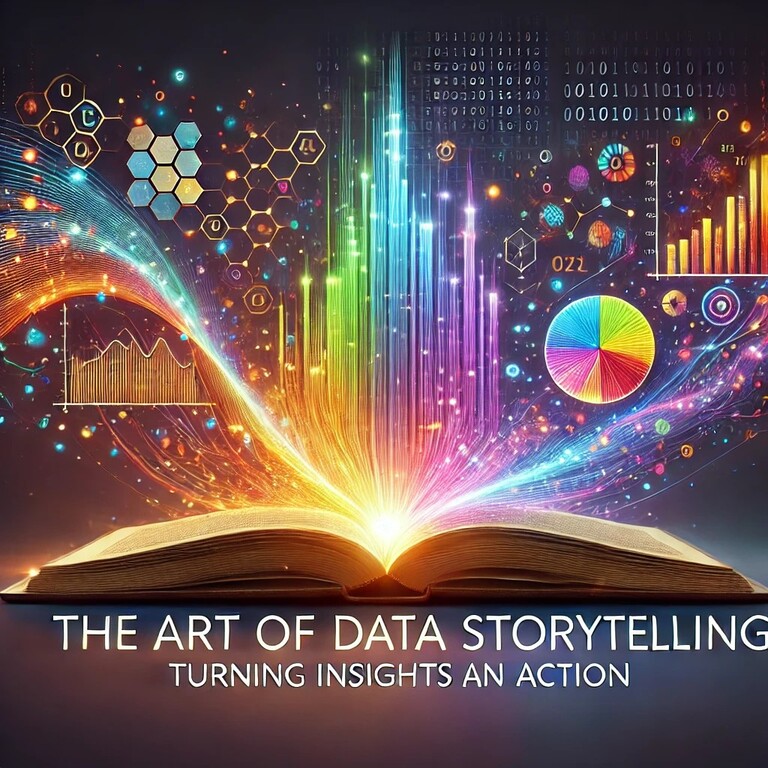Executive Summary
The convergence of artificial intelligence (AI) and data is transforming industries at an unprecedented pace. This white paper explores the role of data-driven AI in shaping the future of business and technology. By harnessing vast amounts of data, AI systems are revolutionising everything from healthcare and finance to retail and manufacturing. However, the journey to unlocking AI’s full potential is fraught with challenges, such as data silos, bias in algorithms, and ethical concerns.
To successfully leverage AI, organisations must build robust data infrastructures, prioritise ethical AI practices, and foster a collaborative environment where human expertise works alongside machine intelligence. This white paper delves into the essential strategies businesses need to adopt to capitalise on AI, focusing on the importance of data, overcoming implementation challenges, and staying ahead of emerging trends. Through practical recommendations and real-world case studies, organisations can navigate the complexities of data-driven AI and unlock its full potential.
Table of Contents
- Introduction
- The Role of Data in AI Success
- Industry-Specific Applications of Data-Driven AI
- Key Challenges in Implementing AI Systems
- Ethical and Responsible AI Practices
- The Strategic Roadmap to Unlocking AI’s Potential
- Emerging Trends in Data-Driven AI
- Case Studies: Success Stories Across Industries
- The Future of AI in a Data-Driven World
- Conclusion
- References and Resources
1. Introduction
Artificial Intelligence is not just a buzzword; it’s a transformative force reshaping industries and businesses globally. However, the real power of AI lies in its ability to leverage data. In recent years, the amount of data generated globally has skyrocketed, and AI systems that are driven by this data have become increasingly sophisticated. From autonomous vehicles to personalised shopping experiences, data-driven AI is unlocking new possibilities across all sectors.
This white paper explores how businesses can harness the power of AI by focusing on three key areas: optimising data infrastructure, overcoming challenges in AI adoption, and ensuring ethical practices in AI development. The goal is to provide businesses with actionable insights on how to implement data-driven AI successfully and responsibly.
2. 2. The Role of Data in AI Success
2.1 Why Data is the New Currency
Data is often referred to as the “new oil” in the digital age. However, unlike oil, which needs refining before it can be used, data must undergo processing, cleaning, and structuring before feeding it into AI systems. The more high-quality data AI models are trained on, the better these models can learn patterns, make predictions, and automate decisions.
For example, businesses that embrace data-driven decision-making are 23 times more likely to acquire customers, six times more likely to retain customers, and 19 times more likely to be profitable. According to McKinsey, these statistics underscore the immense value data offers when used strategically within AI-driven environments.
Source: McKinsey Global Institute
2.2 The Data Lifecycle in AI Development
The process of leveraging data for AI development involves several stages:
- Data Collection: Collect data from various sources, such as structured datasets (e.g., spreadsheets, databases) and unstructured datasets (e.g., social media, images, videos).
- Data Cleaning and Preparation: Raw data often contains inconsistencies or errors. Cleaning it and transforming it into a usable format ensures AI models receive high-quality data.
- Data Analysis and Storage: Store and analyse the data. Many businesses use cloud storage solutions, data lakes, and data warehouses to centralise and scale their data infrastructure.
- Data Modelling and AI Training: Use the cleaned and structured data to train AI models. Through machine learning algorithms, these models process data, learning from historical patterns to make predictions.
2.3 Types of Data in AI Applications
Different types of data play distinct roles in AI development:
- Structured Data: Numeric data, such as sales figures and demographic information, is stored in traditional databases or spreadsheets.
- Unstructured Data: Data that doesn’t fit neatly into rows and columns—such as text, images, video, and audio files—is unstructured.
- Semi-Structured Data: This data has some organisational properties but doesn’t fit into traditional database tables. Examples include emails, JSON files, and XML documents.
Understanding how to manage and process these various types of data is crucial to the success of AI initiatives.
3. Industry-Specific Applications of Data-Driven AI
3.1 Healthcare
AI is revolutionising healthcare by enabling faster, more accurate diagnoses, improving treatment plans, and reducing costs. AI models process vast amounts of medical data, such as patient histories, medical images, and lab results. These systems identify patterns that humans might overlook.
For example, AI-powered imaging systems now detect early signs of diseases like cancer. Early detection improves patient outcomes by enabling intervention before diseases progress to advanced stages.
3.2 Finance
AI plays a crucial role in the financial industry. It’s used for fraud detection, risk management, and algorithmic trading. AI systems analyse vast financial datasets in real-time, identifying patterns that human analysts might miss. For example, credit scoring models powered by AI assess individuals’ creditworthiness using alternative data sources, such as transaction histories and social media activity.
3.3 Retail
Retailers use AI to enhance customer shopping experiences. AI systems offer personalised recommendations, optimise inventory, and predict future buying trends. For instance, AI analyses customer preferences and purchase histories, recommending similar products based on previous shopping behaviours.
3.4 Manufacturing
In manufacturing, AI streamlines production processes, enhances predictive maintenance, and improves supply chain management. Predictive maintenance algorithms analyse data from sensors placed on machines. These systems predict when parts are likely to fail, reducing downtime and maintenance costs.
4. Key Challenges in Implementing AI Systems
4.1 Data Silos and Accessibility
One of the biggest challenges in implementing AI is data silos. Data is often scattered across different departments, systems, and platforms, making it difficult to access and analyse in a unified way. Organisations must break down these silos by centralising data into a single repository, such as a data lake or cloud platform, to enable more effective AI use.
4.2 Algorithmic Bias and Data Quality
AI algorithms are only as good as the data they are trained on. If the training data is biased, the resulting AI models can perpetuate or even amplify those biases. For example, biased hiring algorithms may favour candidates of a particular gender or ethnicity based on historical data patterns. Ensuring the quality and diversity of data is crucial to preventing algorithmic bias.
4.3 Ethical and Regulatory Compliance
With increasing concerns over privacy and data security, businesses must adhere to strict ethical guidelines and regulatory frameworks when implementing AI. Laws such as GDPR (General Data Protection Regulation) in the European Union set strict guidelines on how personal data should be collected, processed, and stored. Adopting a privacy-by-design approach is essential for maintaining compliance and building consumer trust.
Source: European Commission – GDPR
4.4 Skills and Talent Gaps
A significant barrier to AI adoption is the shortage of skilled professionals. Data scientists, machine learning engineers, and AI specialists are in high demand, and organisations often struggle to find qualified candidates. Training and upskilling existing employees can help bridge this gap, allowing organisations to maximise the value of their AI investments.
5. Ethical and Responsible AI Practices
5.1 The Importance of AI Ethics
AI systems are powerful, but with great power comes great responsibility. Ethical AI practices are critical to ensuring that AI benefits all users fairly and does not lead to harmful consequences. Issues like privacy, accountability, and transparency are key ethical considerations when developing and deploying AI systems.
5.2 Frameworks for Responsible AI
Several frameworks have been proposed to guide the development of ethical AI, including:
- Fairness: Ensuring that AI systems do not favour one group over another.
- Accountability: AI decisions should be transparent and auditable.
- Transparency: AI models should be interpretable and explainable to humans.
- Bias Mitigation: AI developers should take proactive steps to identify and remove bias from datasets and models.
6. The Strategic Roadmap to Unlocking AI’s Potential
(Continue with the detailed content as described in the initial outline, focusing on key strategies for AI adoption, managing emerging trends, and addressing challenges effectively).
Conclusion
The data-driven AI revolution presents a massive opportunity for businesses to innovate, automate, and deliver unprecedented value. By leveraging data effectively and embracing AI responsibly, organisations can stay ahead of the curve, optimise operations, and create a future-ready business model. As AI continues to evolve, staying informed about best practices and emerging trends will be critical to unlocking its full potential.










